
If you’re looking for an affordable graphics card for a new build or for an upgrade to your existing system, in this guide, we’ve highlighted a handful of the best options for under $300 right now.
Also, if you need help choosing the right GPU for your needs and budget, be sure to check out our graphics card buyer’s guide, or you can watch it below.
Note: While the upper $200 price range for graphics cards is decent right now, the sub-$200 price range is fairly dismal. If you do have a budget of under $200 to spend on a graphics card, we highly recommend that you consider shopping the used market.
Watch: What to Look for in A Graphics Card
Watch our Beginner’s Guide to Choosing A Graphics Card below, or on our YouTube channel.
Filter for the Right Graphics Card
GIGABYTE RX 9060 XT Gaming OC
The best raw GPU performance under $300
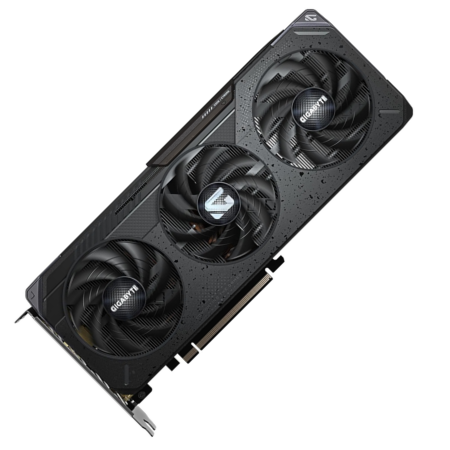
Tech Specs
- Base: 2780MHz
- Boost: 3320MHz
- VRAM: 8GB GDDR6
- Length: 281mm
- PSU: 450-watt
Pros & Cons
- Great 1080P performance
- Triple fan cooling array
- RGB lighting
- 8GB of VRAM isn’t ideal
- Low raytracing/upscaling performance
GIGABYTE RX 9060 XT Gaming OC Overview
If you want high-end 1080P performance without busting the $300 mark, the GIGABYTE RX 9060 XT Gaming OC is an excellent option at right around $280. Gigabyte’s WindForce cooler—dual 90 mm fans with alternate-spin design—tames the card’s 160 W draw, so even a 450 W PSU can handle it. It comes with a core clock rate of 2780MHz and the card will boost up to 3320MHz. While the 8GB of GDDR6 VRAM isn’t ideal, it’s still enough to max out most games at 1080P resolution and even push medium/high settings in a lot of games at 1440P resolution. And, while AMD’s upscaling technology isn’t as good as NVIDIA’s, the new FSR4 will help deliver boost the framerate in those titles that do challenge the limited VRAM. At this price point this card outperforms most sub-$300 competitors, making it one of the best budget graphics card options right now.
PNY RTX 5060 OC
The best graphics card under $300 for raytracing and upscaling
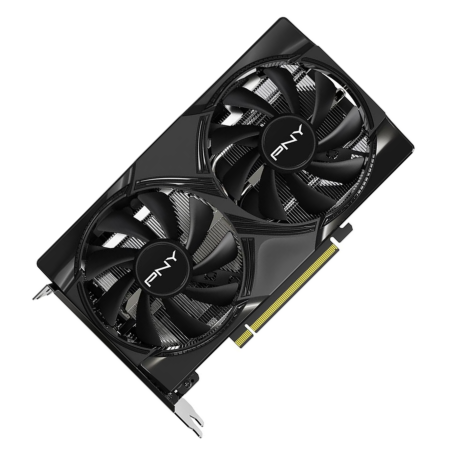
Tech Specs
- Base: 2280MHz
- Boost: 2535MHz
- VRAM: 8GB GDDR7
- Length: 200mm
- PSU: 550W
Pros & Cons
- Great 1080P performance
- Compact design for SFF builds
- NVIDIA DLSS/raytracing performance
- 8GB of VRAM isn’t ideal
- Lower raw performance than the 9060 XT
PNY RTX 5060 OC Overview
Priced at just under $300, the PNY GeForce RTX 5060 OC delivers NVIDIA’s DLSS 4 and ray-tracing perks on a tight budget. This card operates at a core clock of 2280MHz and can boost up to 2535MHz. Its compact dual fan design helps PNY’s RTX 5060 measure in at just 200mm long, making it a great option for a small form-factor build. And, with a minimum PSU requirement of 550W, you won’t have to spend a ton of money on a power supply to handle this card. The card also does come with a disapointing 8GB of VRAM, but it should still handle most games at max settings at 1080P resolution and with DLSS 4 it will bridge the gap (and exceed) the raw performance advantage that the 9060 XT 8GB has in a lot of titles. Ultimately, if you want NVIDIA’s feature-set without having to drop a ton of money, this RTX 5060 from PNY is a great sub-$300 graphics card option.
Sparkle Arc B580 Titan OC
The best option if you want more VRAM (& you’re okay spending a little more)
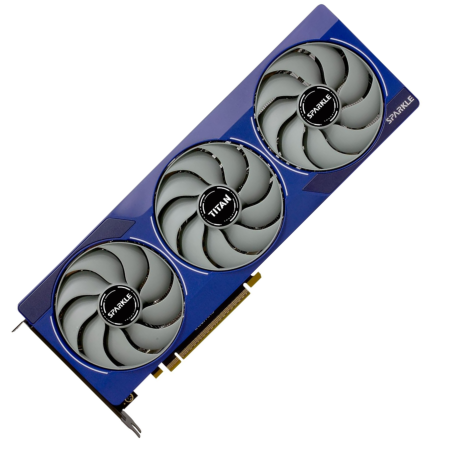
Tech Specs
- Base: 2740MHz
- Boost: N/A
- VRAM: 12GB GDDR6
- Length: 315mm
- PSU: 600W
Pros & Cons
- Great 1080P performance
- More VRAM than other similarly-priced options
- Triple fan cooling array
- Blue design might not be for everyone
- Costs a little over $300
Sparkle Arc B580 Titan OC Overview
Just above our $300 cutoff at ~$320, the Sparkle Arc B580 Titan OC is a “stretch-your-budget” option. Its triple-fan Torn Cooling 2.0 system should deliver excellent thermal and the recommended 600-watt power supply is fairly tame. A factory overclock pushes the boost clock on this card to to 2740 MHz, and 12 GB of GDDR6 VRAM helps the B580 compete with (and surpass) the 9060 XT 8GB and RTX 5060 in many titles. You’ll also get XeSS upscaling and AV1 encode for streaming. Ultimately, if you’re playing games where having that extra 4GB of VRAM will matter, Sparkle’s Arc B580 Titan OC might be the best option for you… and, if you can’t go over $300, then the Arc B570 listed below might be the next best alternative.
Sparkle Arc B570 Guardian OC
The best graphics card option in the mid $200s
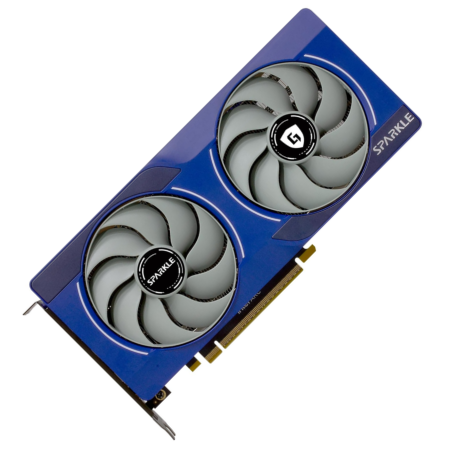
Tech Specs
- Base: 2660MHz
- Boost: N/A
- VRAM: 10GB GDDR6
- Length: 242mm
- PSU: 600W
Pros & Cons
- Good 1080P performance
- More VRAM than other sub-$300 options
- Compact design for SFF builds
- Blue design might not be for everyone
- The 9060 XT is just $20 more
Sparkle Arc B570 Guardian OC Overview
At approximately $260, the Sparkle Arc B570 Guardian OC is the most wallet-friendly Arc Battlemage option currently available. Its dual 90 mm fans should keep tempertures in check and its minimum 600-watt power supply rating won’t be expensive to accommodate. With a 2660 MHz boost clock, 10 GB GDDR6, XeSS, and AV1 support, it punches above its ~$250 weight class. In best-supported titles where the extra VRAM comes into play, it can even rival the RX 9060 XT 8GB and RTX 5060. Ultimately, its $260 pricetag doesn’t make it that much cheaper than an RX 9060 XT 8GB… so it’s currently a tough sell. However, if you need that extra VRAM, or if the price were to come down a bit, it would be an excellent option.
ASRock RX 6600 Challenger
The best GPU choice in the low $200s

Tech Specs
- Base: 1626MHz
- Boost: 2491MHz
- VRAM: 8GB GDDR6
- Length: 269mm
- PSU: 500W
Pros & Cons
- Decent 1080P performance
- Only viable new GPU option in the low $200s
- Older architecture
- More performance to be had on the used market
- No access to AMD’s FSR4
ASRock RX 6600 Challenger Overview
Typically priced in the low $200s, the ASRock RX 6600 Challenger is a good choice for gamers looking for solid 1080P performance. The card is very power efficient and only requires a 500-watt power supply, making it a cheap option to drop into older systems. The RX 6600 Challenger comes with a core clock of 1626MHz and it can boost up to 2491MHz. The card does only come with 8GB of VRAM, but considering that the cheaper alternatives all have either 6GB or 4GB of VRAM, the 8GB of VRAM this card comes with doesn’t seem bad for its pricetag. In the end, if you have around $200 to spend on a graphics card, and you’re just looking for something that can handle games at 1080P resolution, the ASRock RX 6600 Challenger is an option you’ll want to consider. But, this is getting into the price range where you might want to check the used GPU market instead, as you’ll likely be able to find something much more powerful.
GIGABYTE RTX 3050 WF OC
The best new graphics card under $200

Tech Specs
- Base: 1470MHz
- Boost: N/A
- VRAM: 6GB GDDR6
- Length: 191mm
- PSU: 300W
Pros & Cons
- Will work fine for non-demanding 1080P gaming
- Perfect for dropping into older PCs w/weak PSUs
- Older architecture
- More performance to be had on the used market
- 6GB of VRAM will be limiting
GIGABYTE RTX 3050 WF OC Overview
At ~$190, the Gigabyte RTX 3050 WINDFORCE OC V2 is the unique “no extra power” card—it’s not the best option out there, but it will allow users with older systems and weaker power supplies to upgrade their GPU and get decent 1080P performance. The RTX 3050 isn’t going to max out AAA titles, but it will be powerful enough to run them at lower to medium settings, and it should handle non-demanding titles with no problems. If you are looking to build a new system and you’re planning on putting an adequate power supply in it, you may want to consider shopping the used market in this price range, though, as there will be a lot more powerful options available to you.
PowerColor RX 6500 XT Fighter
Entry-level GPU upgrade option for users who have a weak PSU
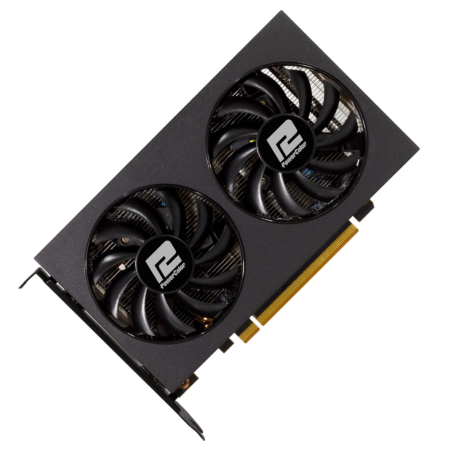
Tech Specs
- Base: 2650MHz
- Boost: 2820MHz
- VRAM: 4GB GDDR6
- Length: Yes
- PSU: 400W
Pros & Cons
- Will work fine for non-demanding 1080P gaming
- Perfect for dropping into older PCs w/weak PSUs
- Older architecture
- More performance to be had on the used market
- 4GB of VRAM will be extremely limiting
PowerColor RX 6500 XT Fighter Overview
The RX 6500 XT really isn’t a great GPU option, even at its low ~$140 price. Like the RTX 3050, it really only serves as an upgrade option you can drop into an older system that has a weak PSU in it. But, as it is ~$40 less expensive than the RTX 3050, there are probably some users out there who could consider using the RX 6500 XT (or the Arc A380 listed below). Ultimately, though, at this price the RX 6500 XT comes in at, most users will want to check the used market as they will likely find something that will deliver a lot more performance.
ASRock Arc A380
An even cheaper alternative to the RX 6500 XT
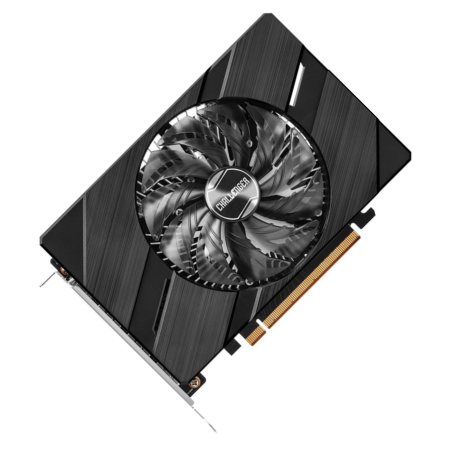
Tech Specs
- Base: 2250MHz
- Boost: N/A
- VRAM: 6GB GDDR6
- Length: 190mm
- PSU: 500W
Pros & Cons
- Will work fine for non-demanding 1080P gaming
- Perfect for dropping into older PCs w/weak PSUs
- Older architecture
- More performance to be had on the used market
- 6GB of VRAM will be limiting
ASRock Arc A380 Overview
The ASRock Arc A380 is sort of in the same boat as the RTX 3050 and RX 6500 XT. It really won’t be a great option for users who are looking to build a budget gaming PC, as for the same price, those users could just shop the used market and find a much more powerful GPU option. However, the ASRock Arc A380 doesn’t require a lot of power, it’s affordable, and it’s very compact, which will make it a good choice to quickly drop into an older system to give it a boost. The A380 is typically priced below both the RTX 3050 and RX 6500 XT making it even more attractive, and it also has more VRAM than the 6500 XT. Ultimately, it’s not a great choice, but for the right user it wouldn’t be the worst choice.
Which Budget GPU Should You Get?
While there are some really expensive graphics cards out there, it doesn’t mean that you have to spend a ton in order to get something that will allow you to play games at higher settings on a 1080P display.
There are a number of great budget-oriented GPUs available in the sub-$300 price range. We’ve listed the best options above.
If you’d like help choosing a graphics card that will suit your needs and budget, post your questions in the comment section below.